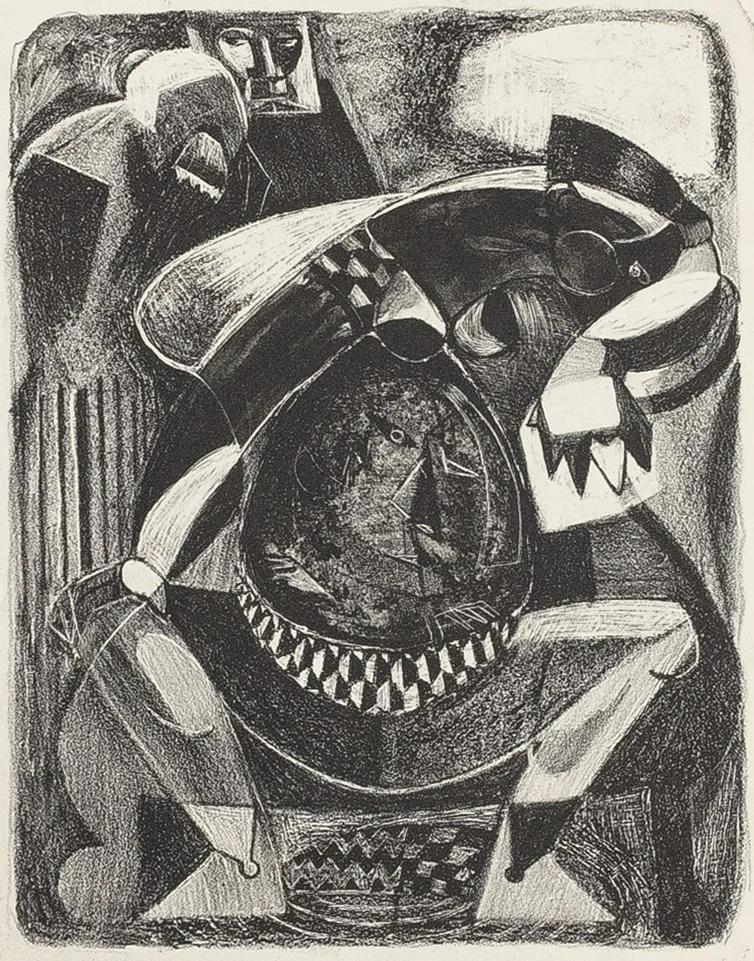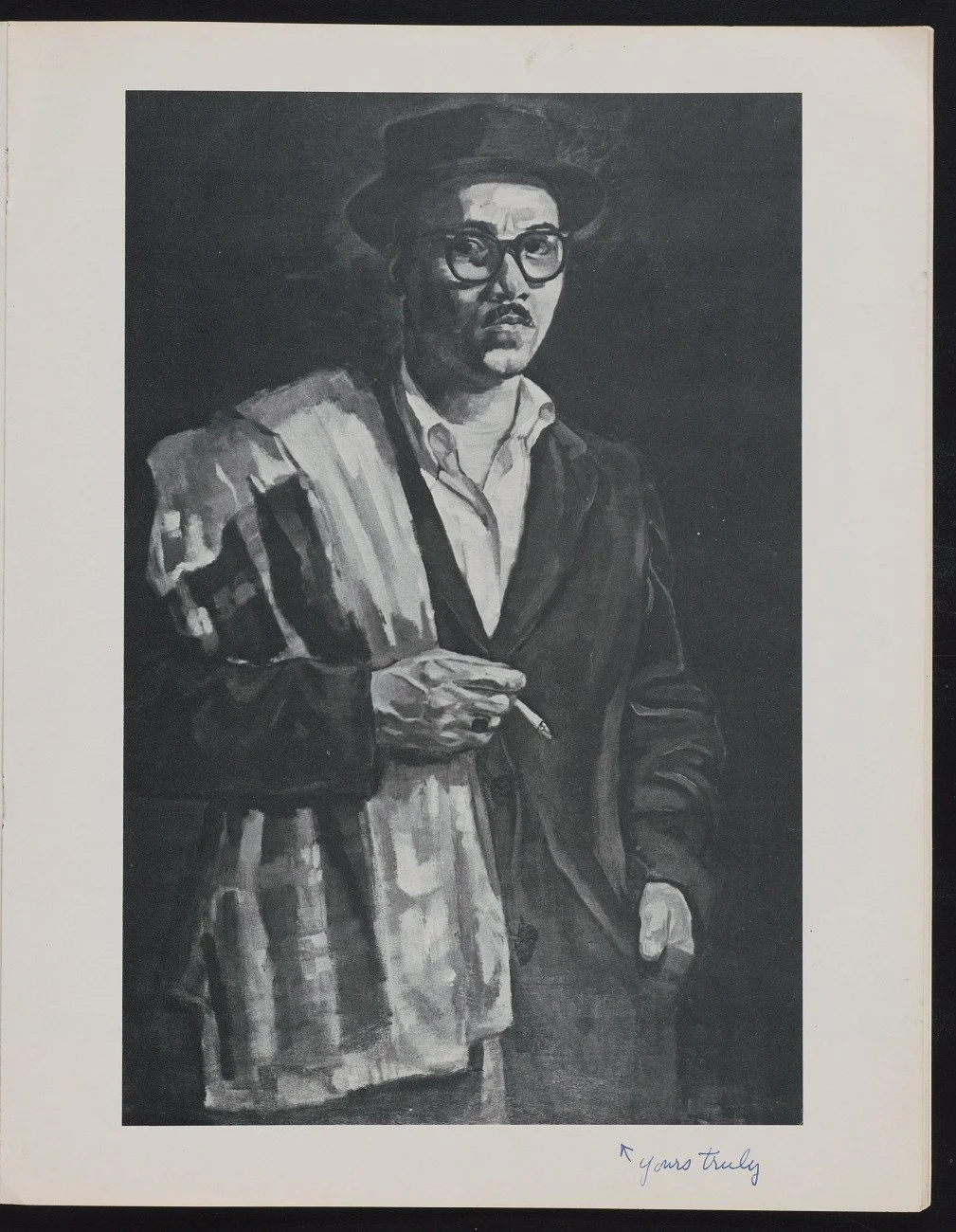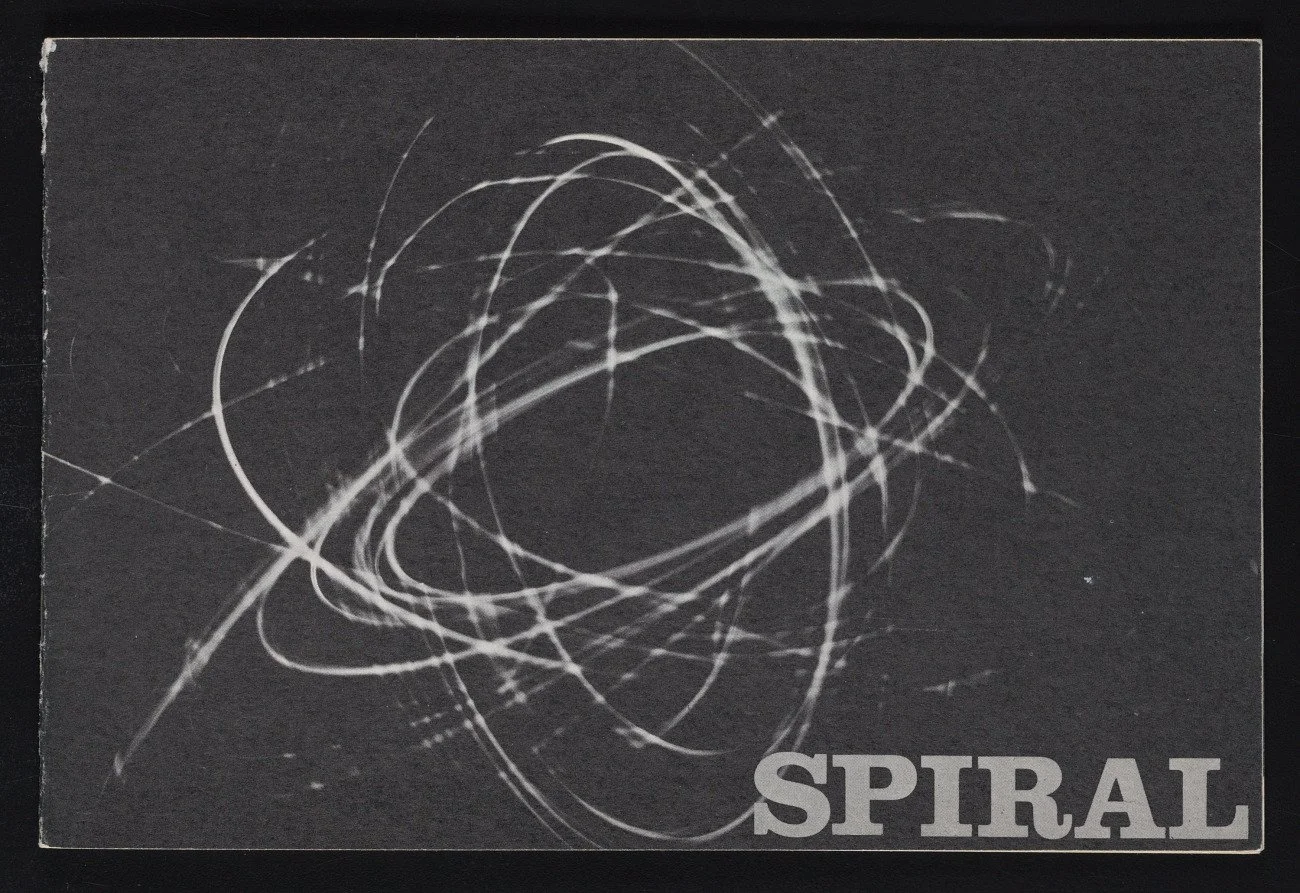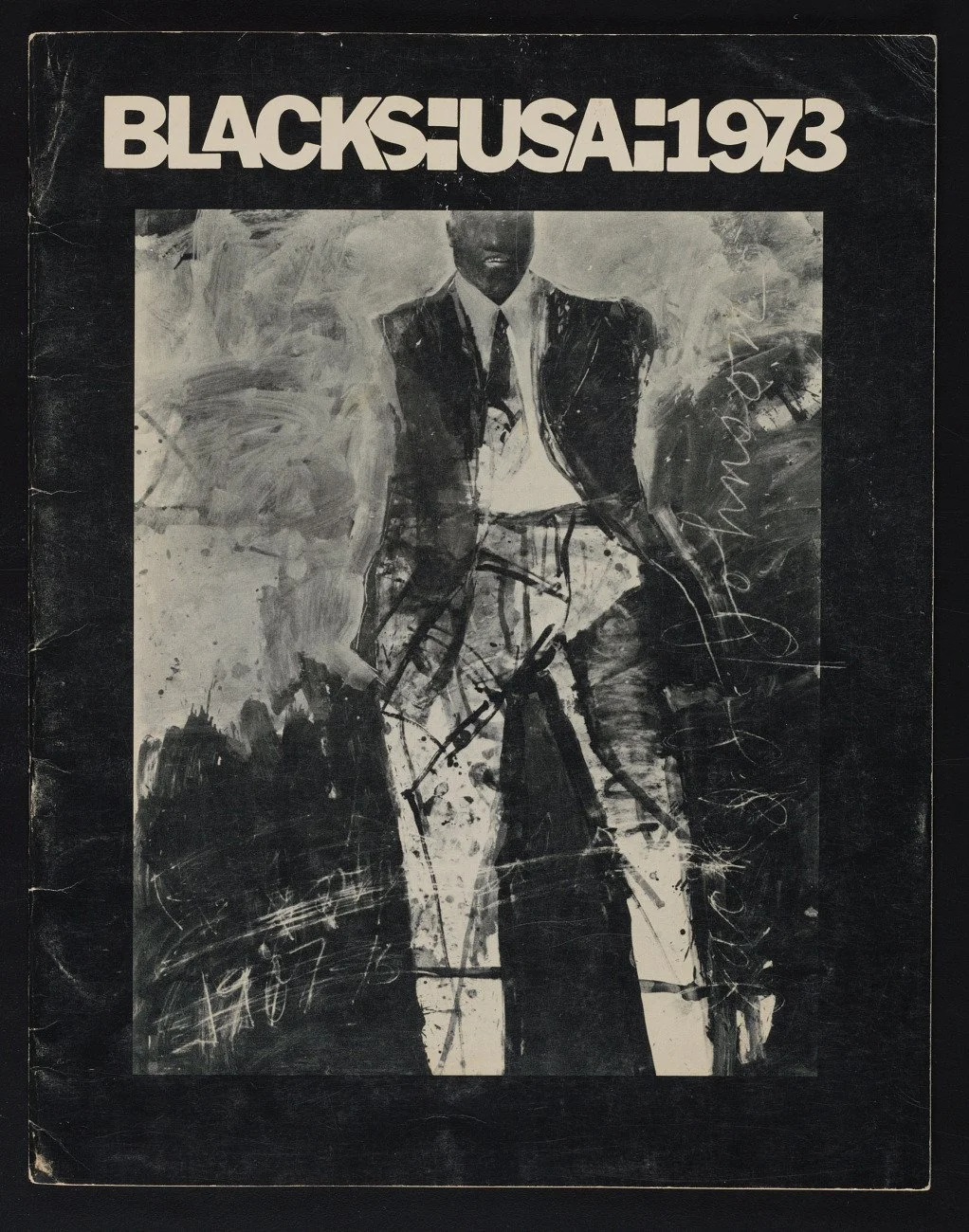
Reginald
Gammon
(1921-2005)
Shame
1948
lithograph on Strathmore paper
10-1/2 x 8 inches (image), full margins
signed, dated, titled, and numbered A/P, 2/2
This powerful early print by Reginald Gammon exemplifies the expressive figuration that would later define his role within Spiral and the Black Emergency Cultural Coalition. Created just two years after his Navy service, the lithograph uses fractured, Cubist-inflected forms and stark tonal contrasts. Known in only two proofs, this work is among the earliest surviving examples of Gammon’s printmaking, marking a pivotal stage between his formal training and the socially charged imagery that followed.
The National Gallery of Art, Washington, DC, has Shame, AP 1/2 in their permanent collection.
Best known for his figurative works that dealt with issues of social justice, Reginald Gammon was born in Philadelphia in 1921. After graduating from high school, he served in the Navy in WWII, and when he returned, he attended the Philadelphia School of Industrial Arts (1941, 1946-1949) and the Tyler School of Fine Art at Temple University (1950-1951)
He moved to New York City in 1951 and quickly became a part of the thriving arts scene in Harlem. Richard Mayhew invited him to join the Spiral Group alongside such artists as Norman Lewis, Romare Bearden, Charles Alston, and William Majors. Gammon participated in their first and only exhibition of works in black and white, with his painting, titled Freedom Now, which translates the rallying cry of the Civil Rights Movement into stark visual form. After the group disbanded, Gammon helped found the Black Emergency Cultural Coalition, with artists Benny Andrews and Cliff Joseph, protesting the exclusion of Black artists from major institutions like the Met and Whitney.
While in New York, Gammon taught in the city’s public schools and ran Saturday art programs. Later, he became a lecturer at Western Michigan University, ultimately spending over two decades there. He retired as Professor Emeritus of Fine Arts and Humanities in 1991.
After retirement, he moved to Albuquerque, New Mexico, and became immersed in the local arts community. He co-founded the New Grounds Printmaking Workshop and Gallery in 1996 with printmaker Monika Graf. New Grounds was one of the first studios in the United States devoted to non-toxic printmaking. Modeled in spirit on Robert Blackburn’s Printmaking Workshop in New York, it combined professional facilities, classes, and an exhibition program to foster collaboration across generations of artists. For Gammon, New Grounds became both a community hub and a creative laboratory, where he produced a celebrated cycle of more than one hundred prints devoted to jazz, gospel, and African diasporic themes. The workshop, still active today, remains a testament to Gammon’s lifelong commitment to cooperative, accessible, and socially engaged artmaking.
Selected Exhibitions
Black and White (Spiral), Christopher Street Gallery, NY, 1965
30 Contemporary Black Artists, Minneapolis Institute of Arts, MN, 1968
Afro-American Artists Since 1950, Brooklyn College Art Gallery, NY, 1969
Afro-American Artists, 1800-1969, School District and Museum of the Philadelphia Civic Center, PA, 1969
Afro-American Artists: New York and Boston, Museum of Fine Arts, Boston, MA, 1970
Rebuttal to Whitney Museum Exhibition: Black Artists in Rebuttal at Acts of Art Gallery, Acts of Art, Inc., NY, 1971
Blacks: USA: 1973, New York Cultural Center, NY, 1973
REGINALD GAMMON: The Gammon File, Acts of Art, Inc., NY, 1973
Tradition and Conflict: Images of a Turbulent Decade 1963-1973, Studio Museum in Harlem, NY, 1985
In the Spirit of Martin: The Living Legacy of Dr. Martin Luther King, Jr., Charles H. Wright Museum of African American History, Detroit, MI, 2002 (traveling)
From Challenge to Triumph: African American Prints & Printmaking, 1867-2002, Museum of Contemporary African Diasporan Art, Brooklyn, NY, 2003
In Search of Missing Masters: The Lewis Tanner Moore Collection of African American Art, Woodmere Art Museum, Philadelphia, PA, 2009
Spiral: Perspectives on an African-American Art Collective, Birmingham Museum of Art, AL, 2011 (also at the Studio Museum in Harlem)
Soul of a Nation: Art in the Age of Black Power, Tate Modern, London, UK, 2017 (traveled to Brooklyn Museum, The Broad, de Young, Museum of Fine Arts Houston)
Self Portrait, 1960, oil on canvas, 36 x 24 inches
Candomblé
2000
etching
8-1/2 x 10-3/4 inches (image), full margins
signed, titled, dated, and numbered 11/20
Created during his Albuquerque years at New Grounds Print Workshop, Candomblé reflects Gammon’s late-career immersion in printmaking and his deep interest in African diasporic spirituality and culture. Executed as an etching in a modest edition of 20, the work belongs to a series of over one hundred prints of jazz musicians, gospel singers, and ritual subjects that occupied him in the last decade of his life.
Candomblé is an African diasporic religion that developed in Brazil during the 19th century. It arose through the merging of several of the traditional religions of West and Central Africa, especially those of the Yoruba, Bantu, and Gbe, coupled with influences from Roman Catholicism.


